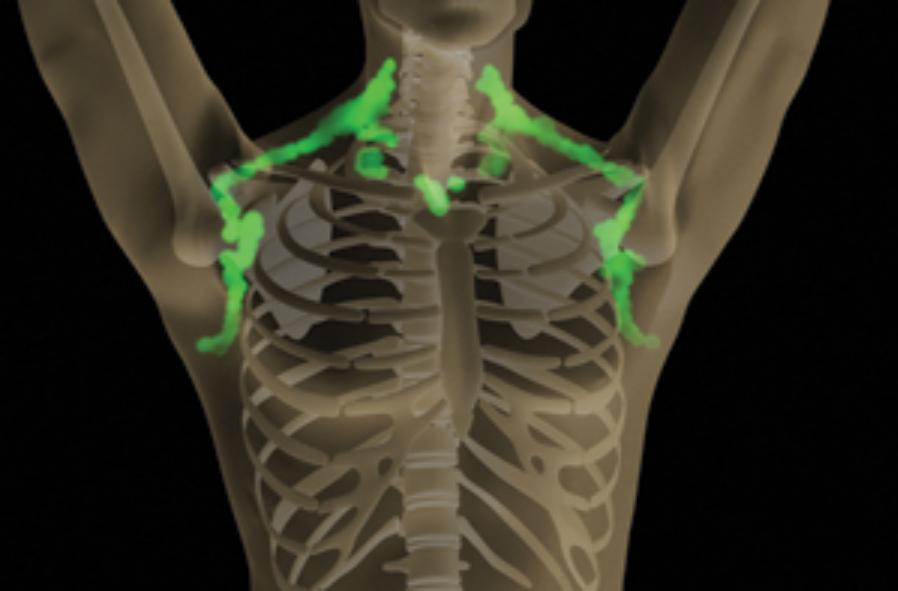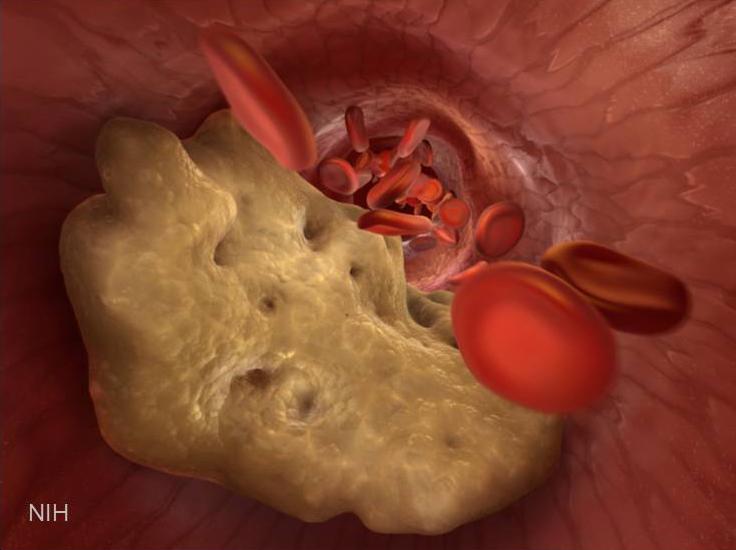National Institutes of Health
NIH at 80: Sharing a Timeless Message from President Roosevelt
Posted on by Dr. Francis Collins
This Saturday, October 31, marks an important milestone in American public health: the 80th anniversary of President Franklin Delano Roosevelt’s dedication of the campus of the National Institutes of Health (NIH) in Bethesda, MD. The President’s stirring speech, delivered from the steps of NIH’s brand-new Administration Building (now called Building 1), was much more than a ribbon-cutting ceremony. It gave voice to NIH’s commitment to using the power of science “to do infinitely more” for the health of all people with “no distinctions of race, of creed, or of color.”
“We cannot be a strong nation unless we are a healthy nation. And so, we must recruit not only men and materials, but also knowledge and science in the service of national strength,” Roosevelt told the crowd of about 3,000. To get a sense of what it was like to be there on that historic day, I encourage you to check out the archival video footage above from the National Archives and Records Administration (NARA).
These words from our 32nd President are especially worth revisiting for their enduring wisdom during a time of national crisis. In October 1940, with World War II raging overseas, the United States faced the prospect of defending its shores and territories from foreign forces. Yet, at the same time as he was bolstering U.S. military capacity, Roosevelt emphasized that it was also essential to use biomedical research to shore up our nation’s defenses against the threats of infectious disease. In a particularly prescient section of the speech, he said: “Now that we are less than a day by plane from the jungle-type yellow fever of South America, less than two days from the sleeping sickness of equatorial Africa, less than three days from cholera and bubonic plague, the ramparts we watch must be civilian in addition to military.”
Today, in the midst of another national crisis—the COVID-19 pandemic—a similar vision is inspiring the work of NIH. With the aim of defending the health of all populations, we are supporting science to understand the novel coronavirus that causes COVID-19 and to develop tests, treatments, and vaccines for this disease that has already killed more than 225,000 Americans and infected more than 8.6 million.
As part of the dedication ceremony, Roosevelt thanked the Luke and Helen Wilson family for donating their 70-acre estate, “Tree Tops,” to serve as a new home for NIH. (Visitors to Wilson Hall in Building 1 will see portraits of the Wilsons.) Founded in 1887, NIH had previously been housed in a small lab on Staten Island, and then in two cramped lab buildings in downtown Washington, D.C. The move to Bethesda, with NIH’s first six buildings already dotting the landscape as Roosevelt spoke, gave the small agency room to evolve into what today is the world’s largest supporter of biomedical research.
Yet, as FDR gazed out over our fledging campus on that autumn day so long ago, he knew that NIH’s true mission would extend far beyond simply conducting science to providing much-needed hope to humans around the world. As he put it in his closing remarks: “I voice for America and for the stricken world, our hopes, our prayers, our faith, in the power of man’s humanity to man.”
On the 80th anniversary of NIH’s move to Bethesda, I could not agree more. Our science—and our humanity—will get us through this pandemic and show the path forward to brighter days ahead.
Links:
Who We Are: History (NIH)
Office of NIH History and Stetten Museum (NIH)
“70 Acres of Science” (Office of NIH History)
Coronavirus (COVID-19) (NIH)
It’s Spring! A Great Time for Cycling, Running, Walking, and Working Out!
Posted on by Dr. Francis Collins
Happy Bike to Work Day! I really wish that I could take part in the festivities on the National Institutes of Health (NIH) campus in Bethesda, MD as I have in past years, but NIH-related travel is keeping me away from my trusty bike.
So, let me take a moment to commend all of the enthusiastic cyclists at NIH, along with everyone else out there who’s doing everything you can to get and stay physically fit. Here at NIH, we are particularly well situated to know the facts: taking charge of your health by participating in an exercise program and eating the right foods is among the most important investments you can make in your future.
MicroRNA Research Takes Aim at Cholesterol
Posted on by Dr. Francis Collins
If you’re concerned about your cardiovascular health, you’re probably familiar with “good” and “bad” cholesterol: high-density lipoprotein (HDL) and its evil counterpart, low-density lipoprotein (LDL). Too much LDL floating around in your blood causes problems by sticking to the artery walls, narrowing the passage and raising risk of a stroke or heart attack. Statins work to lower LDL. HDL, on the other hand, cruises through your arteries scavenging excess cholesterol and returning it to the liver, where it’s broken down.
Creative Minds: Lighting Up Memory
Posted on by Dr. Francis Collins
 One of the most debilitating, and heartbreaking, consequences of Alzheimer’s disease is the way it slowly robs people of their memories. Unfortunately, we don’t yet have a cure for Alzheimer’s, let alone a good understanding of exactly how this disease destroys memory skills. That’s why, in this first post in my series highlighting some of the awardees in NIH Common Fund’s High-Risk, High-Reward Research Program, I’m excited to introduce a young scientist who’s using some cool technology to tackle this formidable challenge: Christine Ann Denny.
One of the most debilitating, and heartbreaking, consequences of Alzheimer’s disease is the way it slowly robs people of their memories. Unfortunately, we don’t yet have a cure for Alzheimer’s, let alone a good understanding of exactly how this disease destroys memory skills. That’s why, in this first post in my series highlighting some of the awardees in NIH Common Fund’s High-Risk, High-Reward Research Program, I’m excited to introduce a young scientist who’s using some cool technology to tackle this formidable challenge: Christine Ann Denny.
A winner of a 2013 NIH Director’s Early Independence Awards (often called the “skip-the-postdoc” award), Denny has developed a technique to label the cells that encode individual memories in the brains of mice. That’s right: she tags the nerve cells that build these memories, the neurons, with a fluorescent molecule that glows.
Copying and Reading the Book of Life Inside One Cell, Accurately
Posted on by Dr. Francis Collins

Caption: The genome researchers collaborated with materials science engineers to create the arrays of microwells or compartments that each capture a single cell.
Credit: UC San Diego Jacobs School of Engineering
Decoding the complete DNA genome in a single cell has been a major goal of technology developers. But the methods aren’t quite able to deal with that yet. So, for scientists to do this, they first need to make multiple copies of the DNA inside. Until now, the copying technology hasn’t been as accurate as scientists would like. If you think of the genome like a book, then our current copiers replicate certain chapters thousands of times, others just a few, and some not at all. As you can imagine, if you tried to read one of these copies, you’d be quite confused—and you certainly couldn’t rely on your reading for any medical purposes.
Now, NIH-funded researchers at the University of California, San Diego, have developed a new molecular technique that can accurately and uniformly copy the DNA inside a single cell [1]. Using this technique, they’ve already made some surprising discoveries.
Snapshots of Life: Amyloid Glows in Polarized Light
Posted on by Dr. Francis Collins
While this may look like one of those bold canvases from the brush of an Abstract Expressionist, it’s actually a close-up of the biology underlying a rare, but relentless, group of conditions known as amyloidosis. This winner of the Federation of American Societies for Experimental Biology’s 2013 BioArt contest traces in exquisite detail the damage that amyloid, which is the abnormal accumulation of specific extracellular proteins, can inflict on the heart.
Fighting Obesity: New Hopes From Brown Fat
Posted on by Dr. Francis Collins

Illustration: John MacNeill, based on patient imaging software designed by Ilan Tal. Copyright 2011 Joslin Diabetes Center
If you want to lose weight, then you actually want more fat, not less. But you need the right kind: brown fat. This special type of fatty tissue burns calories, puts out heat like a furnace, and helps to keep you trim. White fat, on the other hand, stores extra calories and makes you, well, fat. Wouldn’t it be nice if we could instruct our bodies to make more brown fat, and less white fat? Well, NIH-funded researchers have just taken another step in that direction [1].
Yeast Reveals New Drug Target for Parkinson’s
Posted on by Dr. Francis Collins

Credit: Daniel Tardiff, Whitehead Institute
Many progressive neurodegenerative disorders like Alzheimer’s, Huntington’s, and Parkinson’s disease, are characterized by abnormal clumps of proteins that clog up the cell and disrupt normal cellular functions. But it’s difficult to study these complex disease processes directly in the brain—so NIH-funded researchers, led by a team at the Whitehead Institute for Biomedical Research, Cambridge, MA, have turned to yeast for help.
Now, it may sound odd to study a brain disease in yeast, a microorganism long used in baking and brewing. After all, the brain is made up of billions of cells of many different types, while yeast grows as a single cell. But because the processes of protein production are generally conserved from yeast to humans, we can use this infinitely simpler organism to figure out what the proteins clumps are doing and test various drug candidates to halt the damage.
A White Halloween Costume That’s Not a Ghost
Posted on by Dr. Francis Collins

Caption: Dr. Jay Rubinstein and his mini-me, Landon Browne
Credit: Courtesy of Mary Guiden, Seattle Children’s Hospital
What costume to wear for Halloween? For many kids, it’s a difficult choice, but not so for 7-year-old Landon Browne. This year, he’s not going as a zombie or an action hero—he’s going as an NIH-funded researcher!
Landon, who was born almost completely deaf, has decided to dress up as his real-life superhero: Jay Rubinstein, M.D., Ph.D., a physician-scientist at Seattle Children’s Hospital who performed the surgeries that have enabled the boy to hear.
Next Page




